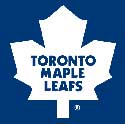
The Early Years
The Toronto Maple Leafs were founded on November 22, 1917 as the Toronto Arenas by lawyer Eddie Livingstone. They replaced the Quebec Bulldogs who had folded, and were one of the first four teams to become part of the National Hockey League. By 1919 the Toronto Arenas had become the Toronto St. Patricks. By 1927 they had won 2 Stanley Cup championships and were purchased by Conn Smythe and Hugh Aird, changing their name to the Toronto Maple Leafs. The purchase also put in motion the construction of a new home for the team and by the 1931 they were playing out of the brand new Maple Leafs Gardens. The "Gashouse Gang" which included King Clancy, Joe Primeau, Charlie Conacher and Busher Jackson brought the Stanley Cup back to Toronto in 1932 and packed the Maple Leaf Gardens throughout the Great Depression.
Birth of a Hockey Powerhouse
By 1961 Conn Smythe had divested himself of this ownership stake in the Toronto Maple Leaf club, selling it to a partnership that included his son Stafford Smythe, Harold Ballard and John Basset for a sum of $2 million. The next year saw the Maple Leafs back in the saddle, winning their 10th Stanley Cup championship, defeating the Chicago Blackhawks. They followed that win by two more Cup victories, beating the Detroit Red Wings twice in 1963 and 1964. The powerhouse Leaf team of the 1960s wasn't quite done yet, winning their final championship of the decade in 1967 by defeating the Montreal Canadiens. The 1967 championship team had a large number of veteran players and was backstopped by the duo of Terry Sawchuk and Eddie Bower in goal.
The Ballard Era
1967 also brought expansion to the National Hockey League, bringing about changes that the Toronto Maple Leafs had trouble adapting to. Their on ice performance was affected by the fact that they were an older team and their front office and ownership were also in flux. By the early 1970s, Harold Ballard had bought out the other partners and was in complete control of the team. He served time for tax evasion and was best known for the iron fisted rule he imposed on the Leafs. The launch of the World Hockey Association (WHA) saw the Leafs lose a lot of talent, but they somehow managed to sport decent teams throughout the 1970s. Though they were nowhere near the glory years of the 1940s and 1960s, the team was blessed with some great players like Darryl Sittler, Lanny McDonald and Dave Keon.
By the 1980s, the Maple Leafs were coming apart at the seams. Ballard brough back Punch Imlach as coach, giving him free reign over the team. Though Punch had been able to deliver in the 1960s, his dictatorial style was ineffective in the 1980s, limiting his second stint in Toronto to just two years. The decade saw the team turn its coaching and general manager jobs into revolving doors. Harold Ballard, Gerry McNamara, Gord Stellick and Floyd Smith tried their hand as general managers. The team also employed Joe Crozier, Mike Nykoluk, Dan Maloney, John Brophy, Doug Carpenter and George Armstrong as head coaches. The decade of the '80s proved to be the most dismal in Maple Leafs history and culminated with the death of Harold Ballard in 1990.
The Re-Birth
After Harold Ballard's death, a committe that included Donald Griffin, Steve Stavro and Donald Crump stepped in as executors of his estate. Cliff Fletcher was brought in to right the ship and he made an immediate impact by putting his mark on the front office, assigning popular Leaf Wendel Clark as the captain and acquiring Doug Gilmour from his former team, the Calgary Flames. The Gilmour trade which saw Calgary receive Gary Leeman, Michel Petit, Alexander Godynyuk, Craig Berube and Jeef Reese for Doug Gilmour, Jamie Macoun, Ric Natress, Kent Maderville and Rick Wamsley turned heavily in the Leafs favour. Flether also signed Pat Burns as coach and brought in Grant Fuhr to play in net. The Leafs placed third in their division with 99 points and were one game from getting a birth in the Stanley Cup finals, losing to Wayne Gretzky and the Los Angeles Kings.
The Leafs were back in the Western Conference finals in 1993, but this time lost to the Vancouver Canucks. The team hit a soft patch in the mid to late 1990s, missing the playoffs for a couple of years. Then in 1998 they hired Pat Quinn as both head coach and general manager. The Leafs led by Mats Sundin, Sergei Berezin and Curtis Joseph made it all the way to the 1999 Eastern Conference finals, before losing to the Buffalo Sabres. The team continued to make the playoffs and post stellar regular season numbers, but were still lacking a Stanley Cup win. The year 2002 saw Curtis Joseph move on, signing as a free agent with the Detroit Red Wings. The Leafs didn't lose a beat as they signed former Dallas Star Eddie Belfour to play in net. The next two seasons saw the Leafs prosper with Belfour, but lose to the Philadelphia Flyers in the playoffs.
After initial success at the beginning of the 21st century, the Maple Leafs hit a rough patch missing the playoffs for over 5 years in a row.